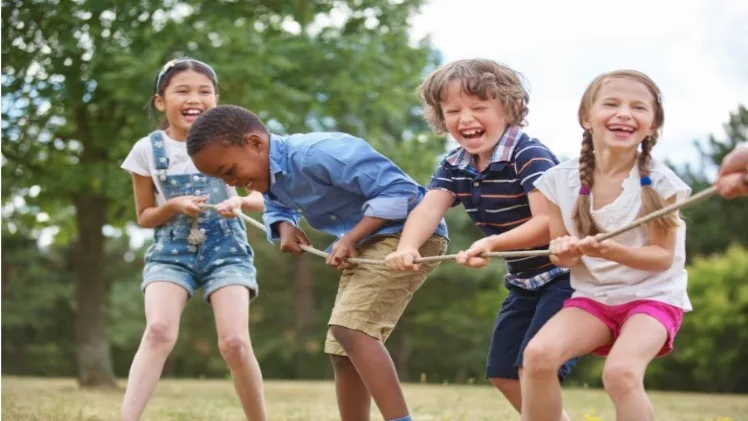Maintaining children’s health and safety is of the utmost importance. Protecting children’s well-being requires taking important precautions, including learning first aid, getting CPR training, and putting preventative measures in place. This in-depth article covers the significance of children’s health and the value of a CPR certificate and offers helpful advice for fostering safety and preserving the best possible health.
Pediatric Health:
In order to promote their healthy growth and development, children require extra consideration and care. Their physical, mental, and emotional well-being are all important so do take a Emergency Paediatric First Aid Course. We can promote a caring environment that enhances children’s health by concentrating on the areas listed below:
Proper nutrition is crucial for children’s growth and development. A balanced diet full of fruits, vegetables, whole grains, lean proteins, and dairy products is recommended. Establish regular mealtimes, discourage sugary snacks and drinks, and promote healthy eating habits.
Regular Physical Activity: Promoting children’s physical fitness, coordination, and strength through age-appropriate physical activity. Encourage team sports, outdoor activity, and cut back on sedentary pursuits like excessive screen time.
Emotional Well-Being: Encourage youngsters to communicate openly and with emotional acuity. Make a safe space where they can freely express their emotions and ideas. Promote healthy self-esteem and teach stress management and coping skills.
Immunizations and preventive care: Ensure that kids obtain the advised vaccines and make regular doctor’s appointments. Regular preventive care enables early detection and treatment of any health issues.
Adequate Sleep: Create regular sleep schedules to make sure kids get the recommended number of hours of sleep for their age. It is essential for their physical and mental growth that they get enough sleep.
Certification in first aid and CPR:
With energetic and inquisitive kids, accidents and emergencies can happen at any time. Parents and caregivers might benefit greatly from receiving CPR training and certification. For kids’ safety, it’s essential to prioritize first aid and CPR certification because:
A prompt and appropriate first aid reaction in an emergency scenario can stop further damage, stabilize a condition, or even save a life. In the interim, until trained medical assistance arrives, the capacity to provide emergency treatment can have a substantial impact on the outcome.
Cardiopulmonary Resuscitation (CPR): In cases of cardiac arrest, CPR is a life-saving procedure. When CPR is administered quickly to a child in need, blood flow is maintained, and key organs receive oxygen, boosting the likelihood of life.
Children are susceptible to choking on little items or food. The Heimlich maneuver is one first aid procedure that can be used to remove blockages and restore breathing to normal.
Drowning Prevention: For young children, accidental drowning is a serious worry. A CPR certification gives people the knowledge and abilities needed to react quickly and successfully in situations involving water.
Injury management: Cuts, burns, fractures, and other common injuries are common in children. Knowing first aid techniques enables caregivers to offer prompt care, reducing suffering and averting subsequent issues.
Healthy and Safe Practices:
Implementing preventive measures is essential for safeguarding children’s safety and well-being in addition to having first aid and CPR certification. Here are some helpful pointers to encourage safety and sustain excellent health:
Identifying possible risks, securing cupboards, installing safety gates, and covering electrical outlets are key steps in childproofing a home. The risk of accidents is decreased, and a safe atmosphere is ensured by childproofing the house.
Provide adequate supervision, particularly while children are playing, close to bodies of water, or around potentially hazardous objects or situations.
Road Safety: Inform kids about the need to use crosswalks, look both ways before crossing, and wear reflective gear whether bicycling or walking.
Children should be watched and taught about safe internet practices. Inform kids about online safety, respect for other’s privacy, and appropriate conduct.
Hygiene & Handwashing: To stop the spread of germs and lower the risk of diseases, teach appropriate handwashing methods and hygiene practices.
Encourage regular handwashing, twice-daily tooth brushing, and the development of wholesome eating practices. Limit sugary foods and drinks, and encourage a healthy diet.
For children’s entire well-being and future achievement, health and safety come first. We build the basis for healthy habits by prioritizing their health through wholesome diets, regular exercise, and emotional support. Additionally, obtaining first aid and CPR certification enables parents and caregivers to react appropriately in emergency situations, assuring the best result. We foster an environment that fosters children’s growth, reduces dangers, and enables them to thrive by putting preventive measures into place and encouraging safety. As our most valuable asset, let’s invest in the health and safety of our kids.



